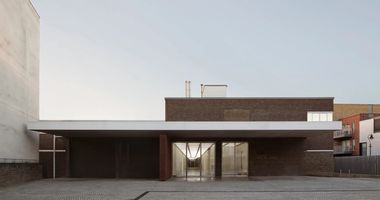Tim Marlow
Image: Benedict Johnson, Courtesy of the Royal Academy of Arts

Image: Benedict Johnson, Courtesy of the Royal Academy of Arts
On the 28th April 2014, Tim Marlow—who had directed exhibitions at White Cube since 2003—embarked on a new role as Director of Artistic Programmes at the Royal Academy of Arts (RA), a British institution of historical significance located in central London.
Marlow is also an art historian, who has provided commentary on the contemporary cultural scene for television and radio, as well as for print publications and broadsheets, including Art Monthly, The Times, The Guardian and The Independent on Sunday.
In his new role, Marlow will be responsible for exhibitions, learning, public talks, the Royal Academy collection as well as the architecture programme. He will also be presiding over a Beijing—London—Hong Kong artist exchange programme developed by the RA, the Central Academy of Fine Arts, Beijing and Arts in Heritage Research Limited, Hong Kong. In this interview, Marlow discusses his appointment, reflecting on the RA's past, present and future.
SBYou were recently appointed Artistic Director of the Royal Academy. How do you intend to approach this new position?
TMWell, generally speaking I have to listen first and then spend time working out what's possible and what needs to be done. The role is of course broad, but as Artistic Director it means you are in charge of all content, and at the Royal Academy content is king because artists founded the Academy and artists run it. It also has a school at the heart of it, which no other comparable organization in Europe does.
In this sense, the Academy's exhibitions, the debate it generates, the learning and research it supports, not to mention its archive, its collections, its library, its publishing—it all feeds into what the institution is all about, which is the promotion, interrogation, and exhibiting of art and the discussion and research that takes place around that. It's like a cultural playground, really.
These types of conversations are very powerful, especially with the more intensive impact that small scale can provide.
SBHow will you be applying your experience at the White Cube, where you were in charge of exhibitions from 2003, to your new role at the RA?
TMIn some ways it's a completely different thing, but of course White Cube is artist-driven as all good galleries are. Spending time working with artists on their exhibitions, spending time in their studios—there is a good parallel there, since the RA is an artist-run organization. Of course, even though my role was not on the commercial side at White Cube, fundamentally the gallery is a commercial organization.
The Academy is an independent, privately funded institution, so my background with White Cube will help me with the RA to a certain extent. At the same time, this is also a different kind of challenge for me in my life and career.
SBDo you see a difference between White Cube as a commercial gallery, and the Royal Academy, which is a public institution run by artist and architect academicians?
TMCommercial galleries rarely host loan-based large-scale historic exhibitions. Nevertheless, I think the quality and ambition in the programmes of commercial galleries is something the public sector can be quite envious of, and I'd like to bring some of that, can-do spirit to the Academy. And because it is not accountable in the same way as other publically funded institutions are.
There is more freedom, though there are constraints in terms of budgeting and funding. But on occasion it has the potential to behave in a leaner, more interesting way, even if it is a 250-year-old public institution. Generally speaking, the Royal Academy is a healthily conflicted institution, by which I mean there is also a high level of creative debate and tension that goes on here precisely because of its structure.
The Academicians are continuously changing, so there will never be consensus, nor should there be; things are very much out in the open and I find that quite inspiring. In some ways, there is much less orthodoxy in the Academy as you might find in contemporary art museums.
Within reason, almost everything seems possible here if you do it in the right way.
SBYou have said of the Royal Academy: 'I love the Academy because it has almost been like a pillar of the establishment for centuries but it's kind of slightly misunderstood, slightly underrated and slightly anti-establishment.' How has the Royal Academy been slightly misunderstood?
TMBecause it's called the Royal Academy, many people think it is state-funded. Take the model of the avantgarde, which is so fragmented it has arguably become meaningless: in that model, which grew out of Western art in the 19th Century, the Academy was the establishment, so therefore in reductive terms it would be easy to equate the Academy with the establishment. Established artists have joined the Academy, which was set up to promote British art abroad and take on the best attributes and values of European art, and you could say it succeeded.
However the Academy is almost singular in that this is a place where artists and architects come together and actually run the place. And it is a place where a new generation is constantly elected, and there is a multiplicity in media, style and approach. If the establishment is embodied by and within the Royal Academy, it is anti-establishment too, because there are always dissenting voices. Now, in the 21st century, there is a greater variety of approach, style and attitude among the members than perhaps at any time in the Academy's history.
SBYou will also be overseeing the strategy for international programmes at the RA, which includes a Beijing/London/Hong Kong artist exchange programme jointly developed by the Central Academy of Fine Arts, Beijing (CAFA), the Royal Academy of Arts, London (RA) and Arts in Heritage Research Limited, Hong Kong (AHR). Could you talk about this programme, and more generally about the international aims of the RA?
TMIt's a small programme, with a small number of students, but the reciprocity and the dialogues that can take place between these three institutions is clearly a beneficial thing. I mean the Royal Academy's school is the hidden gem of the Royal Academy. It is the only free art school in Britain, now. I would like to try and expand this programme more, as I feel like this kind of exchange can only be healthy. These types of conversations are very powerful, especially with the more intensive impact that small scale can provide.
The thing about the Academy and its relation to the international art world, is that it's always able to contend because its exhibition programme can look as far afield as it wants. It has a very good collection, which includes the only Michelangelo sculpture in Britain, and we have some wonderful diploma works that have been given by Academicians over the centuries—it's our story with other stories embodied within it.
But we're not constrained by our constitution or our collection, in that the areas we look at do not always need to be determined by the collections we have. Within reason, almost everything seems possible here if you do it in the right way. That is an interesting position to occupy in the art world. —[O]












































































































































































